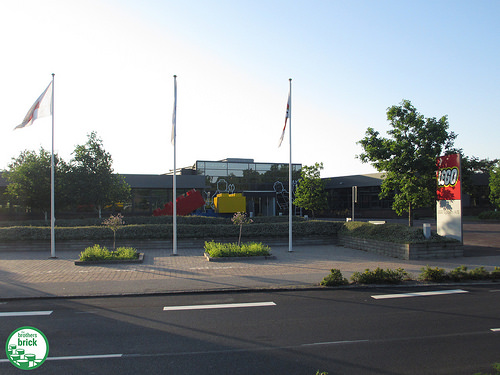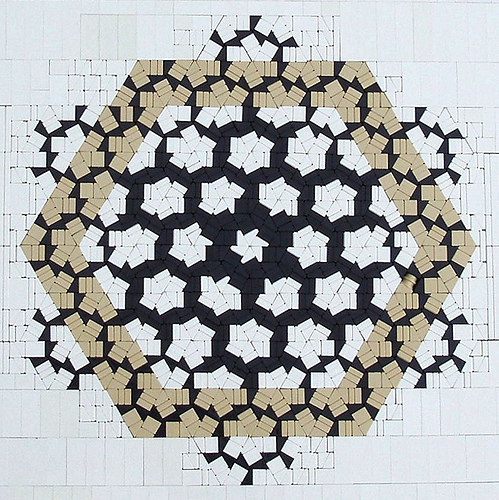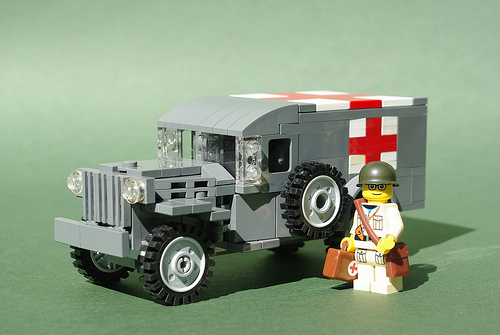 Today is the seventh birthday of The Brothers Brick! Well, it was actually yesterday, but I was out having dinner with my wife — as I said last year, real life always comes before LEGO. ;-)
Today is the seventh birthday of The Brothers Brick! Well, it was actually yesterday, but I was out having dinner with my wife — as I said last year, real life always comes before LEGO. ;-)
It’s been another year of growth and change in the LEGO fan community, and as I think back over the past twelve months, a couple themes emerge in my mind.
More ways to get your TBB fix
In the past year, we’ve enabled you, our readers, to access TBB posts far beyond just the website and its RSS feed. “Like” TBB on Facebook and follow @BrothersBrick on Twitter to get the latest TBB posts without leaving your other favorite websites.
As always, the Bricking News app created by Ace Kim from FBTB gives you a native iPhone experience for posts from TBB, FBTB, and other LEGO fan sites.
app created by Ace Kim from FBTB gives you a native iPhone experience for posts from TBB, FBTB, and other LEGO fan sites.
 I’m also working on making Brothers-Brick.com itself more mobile-friendly, but can’t quite get the plugin and mobile themes to cooperate to my liking. We’ll get it right before rolling it out.
I’m also working on making Brothers-Brick.com itself more mobile-friendly, but can’t quite get the plugin and mobile themes to cooperate to my liking. We’ll get it right before rolling it out.
Hey, TBB! Flog this on your blog!
The LEGO Group and the LEGO fan community have wholeheartedly embraced crowd-sourcing and crowd-funding.
Last October, TLG opened LEGO CUUSOO to Beta users outside Japan. In January, LEGO launched ReBrick, for sharing and highlighting LEGO models from around the web (a project I had the opportunity to work with LEGO on in its early stages and that I’ve wanted to see grow organically, without too much interference from us).
LEGO fans have also embraced KickStarter, Etsy, and other social-commercial hybrids to fund and sell LEGO-related projects outside “official” LEGO channels.
The last six months have seen a major increase in requests to highlight — and thereby throw the blog’s referral traffic behind — CUUSOO and Kickstarter projects, alongside Rebrick contests and Etsy stores.
I’m especially troubled by the patterns I see across CUUSOO projects. For example, we were spammed over several weeks by dozens of copy/paste messages from what I’m assuming are a bunch of children (based on a general lack of adherence to the norms of adult communication) supporting a project that would get them a hundred minifigs from a movie franchise for which LEGO already has a license, and for which LEGO has explained repeatedly that they are contractually barred from releasing minifig-only items. And yet the project had over 8,000 supporters at the time.
I wish nothing but success to many of the projects I see — many of them created by good friends or supported by other contributors here on the blog. But there’s an interesting contrast between the science-oriented models that generated the first two successful CUUSOO projects in Japan (the Shinkai submarine and Hayabusa satellite) and two of the first global/American CUUSOO projects to hit 10,000 supporters, which were inspired by popular video games.
Far too many projects propose sets or themes based on IP (intellectual property) that LEGO would never license in a million years — R-rated movies and M-rated video games, or licenses that LEGO’s competitors already have. All this noise certainly gives LEGO a whole lot of data about what the customer base really wants, but it all seems to go against the spirit of CUUSOO. In Japanese, cuusoo means “wish,” with nuances of “daydream” and “imagination.” I’m not seeing a lot of genuine creativity in most of the projects that TBB is asked to help promote.
The LEGO Group has spent quite a few blog posts recently improving and clarifying the approval process, age limits for participants, review timeline, and basic project guidelines for CUUSOO. All of this much-needed recent activity seems directed at fixing an underlying misperception about what LEGO CUUSOO can and should be.
While it’s not clear to me why so many people obviously don’t get LEGO CUUSOO, it’s nevertheless heartening to see rays of brilliance and true creativity like the LEGO Strandbeest and Modular Western Town (which did hit 10,000 supporters) among the dross and dreck.
LEGO is clearly working hard to fix the problem they’ve created by launching a site like this without the kind of unambiguous guidelines that have so obviously been needed. In the meantime, the rest of us can filter through CUUSOO ourselves and choose to support the truly worthy projects.
All about you, by the numbers
Each year, we highlight some interesting stats that say more about all of you out there, our readership community, than about The Brothers Brick itself. You’re a large, ever-growing community of LEGO fans from all over the world, with interests as varied as the posts here on the front page today.
- 2,306 fans on our Facebook page
- 659 followers on Twitter
- 12,809 subscribers to the RSS feed
- 6,309,877 visits
- 10,834,539 page views
- 1,978,936 unique visitors
- 867 new posts
While Central Africa and North Korea continue to resist the LEGO temptations that we offer here every day, people in Central Asia have finally joined our readership, with visits from Kazakhstan, Afghanistan, Kyrgyzstan, Uzbekistan, Turkmenistan, and Tajikistan.

Once again, the top 30 countries from which people visit The Brothers Brick didn’t change at all, with very little movement among the countries.
- United States
- United Kingdom
- Canada
- Germany
- France
- Australia
- Netherlands
- Italy
- Poland
- Spain
|
- Sweden
- Belgium
- Denmark
- Japan
- Hungary
- New Zealand
- Hong Kong
- Switzerland
- Russia
- Brazil
|
- Singapore
- Norway
- Taiwan
- Finland
- Mexico
- Portugal
- Austria
- Czech Republic
- Ireland
- Croatia
|
In a shift from last year, search engine keywords are less about the major news that happened between July 2011 and July 2012 than about higher-level LEGO themes. Not surprisingly, inbound traffic is balanced among social media, fellow LEGO fan sites, and the “big blogs.”
* Excluding variations on “The Brothers Brick”.
LEGO’s announcement that they’d be releasing sets based on J.R.R. Tolkien’s The Lord of the Rings and The Hobbit (the latter timed for release alongside the first part of Peter Jackson’s movie version) dominated the most popular posts, along with related LEGO LOTR posts featuring fan-built models. As always, pop culture creations tend to go viral and generate a lot of interest from beyond the AFOL community.
- LEGO Lord of the Rings and The Hobbit announcement
- LEGO Volkswagen T1 Camper announcement
- Lifesize LEGO Halo sniper rifle
- LEGO Gears of War Lancer rifle with firing action and chainsaw
- Dragonball Z Kame House and minifigs
- NinjaGo theme song “Weekend Whip” MP3 download
- Nannan’s purist LEGO guns
- LEGO Lord of the Rings Tower of Orthanc by the OneLug
- LEGO Shaun of the Dead a no-go on CUUSOO*
- 9 of the best LEGO Lord of the Rings models built by fans
* TBB post tweeted to 2 million people by Shaun of the Dead star Simon Pegg.
Finally, the usual ride in the wayback machine:
The Brothers Brick is funded by our readers and the community. Articles may include affiliate links, and when you purchase products from those links, TBB may earn a commission that helps support the site.

 Back in 2009, I wrote a lengthy post titled
Back in 2009, I wrote a lengthy post titled 



 Today is the seventh birthday of The Brothers Brick! Well, it was actually yesterday, but I was out having dinner with my wife — as I said last year, real life always comes before LEGO. ;-)
Today is the seventh birthday of The Brothers Brick! Well, it was actually yesterday, but I was out having dinner with my wife — as I said last year, real life always comes before LEGO. ;-) 


























